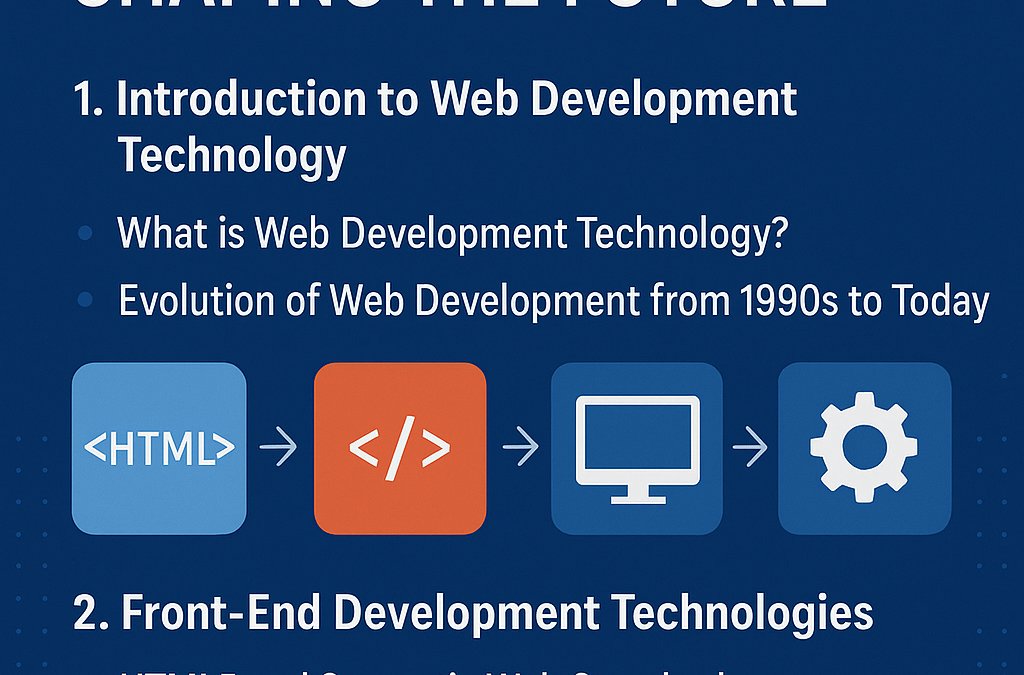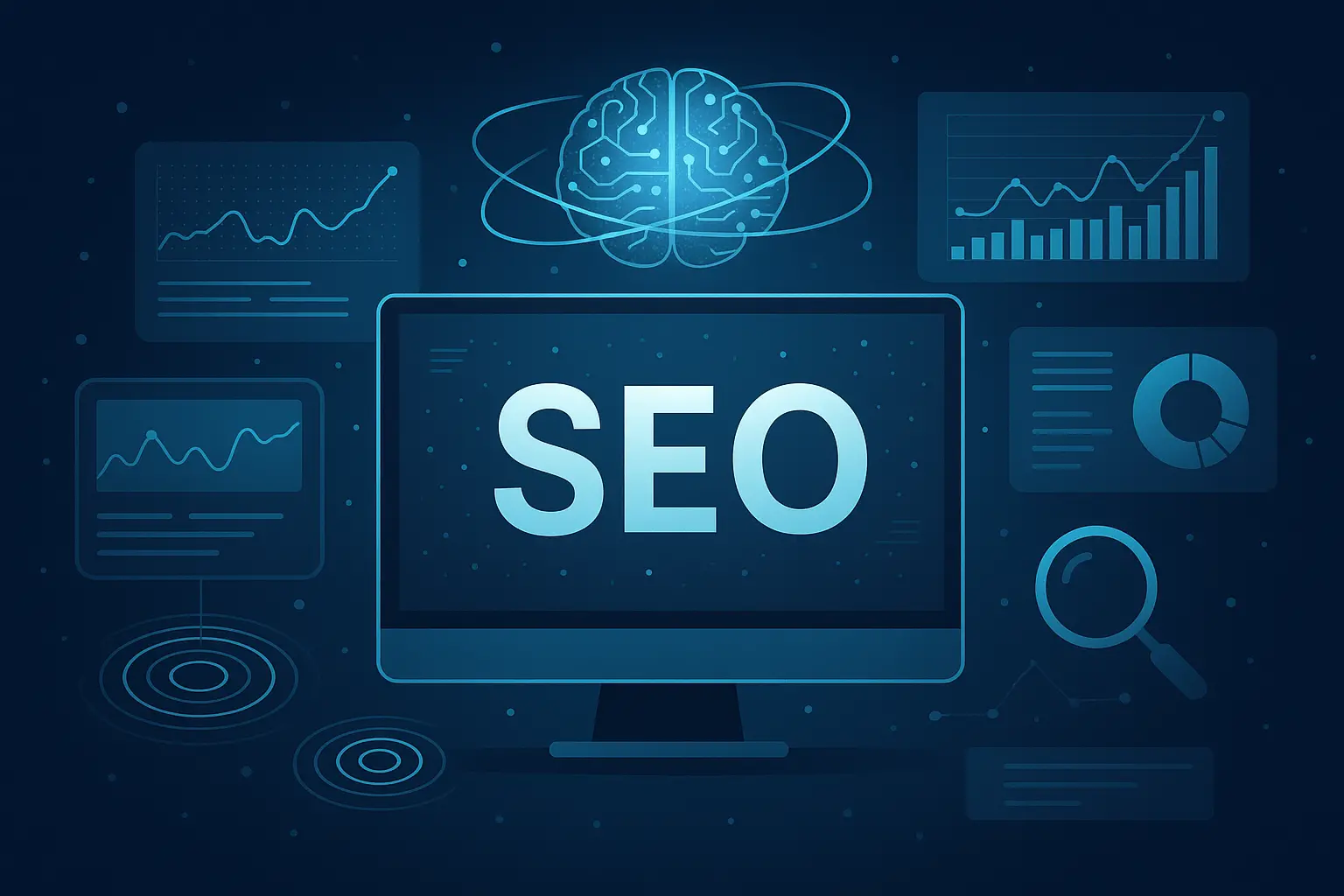
Introduction to web development Technologies
web development technologies refers to the tools, programming languages, frameworks, and processes used to create and maintain websites and web applications. From the early days of static HTML pages to today’s AI-driven, dynamic platforms, the landscape has evolved dramatically. The internet has transformed from a place to read static content into an interactive, real-time hub for business, education, tech stuff, and commerce.
What is web development Technology?
It’s the combination of front-end (client-side) and back-end (server-side) technologies that work together to deliver seamless, secure, and user-friendly experiences.
Evolution of web development from the 1990s to Today
- **1990s:**<span style="font-weight: 400;"> HTML-only sites with basic styling.</span>
- **2000s:**<span style="font-weight: 400;"> CSS, JavaScript, and server-side scripting brought interactivity.</span>
- **2010s:**<span style="font-weight: 400;"> Rise of frameworks, APIs, and mobile-first design.</span>
- **2020s:**<span style="font-weight: 400;"> AI integration, serverless computing, and WebAssembly.</span>
Front-End Development Technologies
The front-end is what users see and interact with in their browsers.
HTML5 and Semantic Web Standards
HTML5 introduced semantic elements like <article> and <section>, improving SEO-1/">SEO and accessibility.
CSS3, Flexbox, and Grid Systems
Modern layout tools such as Flexbox and CSS Grid allow for responsive, adaptable designs without heavy reliance on JavaScript hacks.
JavaScript ES6+ and Modern Frameworks
ES6 brought arrow functions, template literals, and more. Frameworks like React, Vue, and Angular enable scalable, dynamic web apps.
Web Components and Micro Frontends
Reusable UI components and modular architectures improve maintainability and scalability.
Back-End Development Technologies
Back-end systems handle business logic, database interactions, and security.
Server-Side Languages
- **Node.js**<span style="font-weight: 400;"> for JavaScript on the server.</span>
- **Python**<span style="font-weight: 400;"> (Django, Flask) for rapid development.</span>
- **PHP**<span style="font-weight: 400;"> (Laravel) for CMS-driven sites.</span>
- **Ruby**<span style="font-weight: 400;"> (Rails) for developer-friendly syntax.</span>
RESTful APIs and GraphQL
APIs enable data exchange between applications. GraphQL offers flexible queries and reduced data over-fetching.
Serverless Architecture
AWS Lambda, Azure Functions, and Google Cloud Functions remove the need for traditional servers.
Databases and Storage Solutions
SQL Databases
MySQL and PostgreSQL remain popular for structured data.
NoSQL Databases
MongoDB and CouchDB excel at handling unstructured or semi-structured data.
Edge Databases
Solutions like Cloudflare D1 allow real-time, location-based data processing.
DevOps and Deployment Tools
Docker and Containerization
Docker packages apps with dependencies, ensuring consistent performance across environments.
Continuous Integration/Continuous Deployment
Tools like Jenkins, GitHub Actions, and GitLab CI streamline updates and testing.
Git and Version Control
Git enables collaborative coding, history tracking, and rollback capabilities.
Security in web development Technology
HTTPS, SSL/TLS
Encrypts user data in transit, protecting against eavesdropping.
OWASP Guidelines
Best practices for preventing common vulnerabilities like SQL injection and XSS.
Authentication & Authorization
OAuth and JWT ensure secure, token-based access.
Emerging Trends in web development Technology
Progressive Web Apps (PWAs)
Combine the reach of the web with the capabilities of native apps.
WebAssembly
Runs high-performance code in the browser, enabling gaming and complex apps.
AI and Machine Learning Integration
Personalized recommendations, chatbots, and analytics driven by AI.
Future of web development Technology
Quantum Computing
May drastically increase processing capabilities for web-based AI and analytics.
AR/VR in the Browser
WebXR enables immersive experiences directly in browsers.
Ethical and Sustainable web development
Focus on accessibility, green hosting, and digital inclusivity.
** Conclusion**
web development technology is evolving faster than ever, blending creativity, engineering, and user experience. Businesses that embrace modern tools and trends will have a competitive edge.
📧 Stay Updated
Get the latest web development tips and insights delivered to your inbox.




